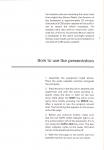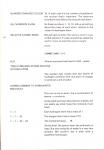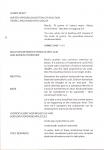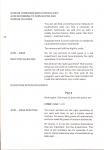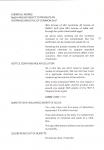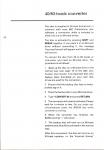


| Genre: | Compilation Of Arcade Games |
| Publisher: | BBCSoft/BBC Publications |
| Cover Art Language: | English |
| Machine Compatibility: | BBC Model B |
| Release: | Professionally released on 5.25" Disc |
| Available For: | BBC/Electron |
| Compatible Emulators: | BeebEm (PC (Windows)) PcBBC (PC (MS-DOS)) Model B Emulator (PC (Windows)) |
| Original Release Date: | 22nd March 1984 |
| Original Release Price: | Unknown |
| Market Valuation: | £4.00 (How Is This Calculated?) |
| Item Weight: | 368g |
| Box Type: | Cassette Single Plastic Clear |
| Author(s): | - |
Variant Items
There is 1 other item featuring this same game (that we know about!). Click any of them for their details.
Active Auctions
Closed Auctions
Buy It
Unfortunately no-one is currently selling this item.
Inner Inlay
Auction Price Watch
Worried you're being ripped off? Closing prices on eBay can help you decide what a reasonable price is for a particular item.

Electron User
1st March 1986
This is a program that chemistry teachers really should find time for. Read Review
Full Instructions
The Mole Concept
The Mole Concept is the result of a collaboration between BBC School Radio and the Microelectronics Education Programme.
Using the highly effective technique of Computer Synchronised Audio (a voice-track combined with computer software), the fundamental concept of a *mole* is demonstrated and explained. Vivid graphics and animation help to introduce the term *nucleus*, *proton*, *electron* and *relative atomic mass*. The combining of two hydrogen atoms and one oxygen atom to form one *molecule* of water is illustrated. This leads to the *mole* as a representation of the number of atoms in one gram of carbon - 12. The mole is shown to be the vital 'ingredient' in the 'recipes' for precisely calculating chemical reactions. This in turn leads naturally to a simulated titration experiment calculated to engage the user's attention and revise his or her knowledge.
The CSA presentation is friendly and the software loses no opportunity to illuminate the mole concept. Revision questions reinforce the user's understanding, putting the final touch to a piece of intensively tested software that teachers and students, at home or at school, will find highly rewarding.
The software has been designed and tested on the following configurations of the British Broadcasting Corporation Model B Microcomputer: Operating System 1.20, BASIC 1 or BASIC 2, Acorn Disc Filing System 0.90. The programs are on a 5.25" 40-track floppy disk but can be transferred to an 80-track disc using the converter program that is supplied.
The software is compatible with Econet Level 2 and above.
Introduction
This presentation in Computer Synchronised Audio is intended as a self-help operation. You can use it as a medium for direct learning - or it can be used for revision. It is planned so that the computer software and the associated voice-track lead you through the essential theory of the subject. At intervals, you are invited to switch off the voice-track so that you can work through problems posed by the computer. The problems set by the computer are designed to consolidate what you have learned in the computer synchronised parts of the presentation.
To get the most out of this presentation, you should have a minimum knowledge of basic chemistry. You will need to be familiar with the terms 'atom' and 'molecule'. You will also need some idea of the nature of a few common chemical reactions. Little more in the way of background knowledge is needed: the presentation introduces the idea of the relative quantities involved in chemical reactions and offers an insight into technological applications.
Computer Synchronised Audio (CSA)
This technique was pioneered by BBC School Radio in its very popular series Using Your Computer. It involves a voice-track and synchronised computer software.
Voice-track and computer program are kept in step by the user who presses the space-bar in response to audio-cues (chimes) given by the voice-track. This method of maintaining synchronisation has been chosen for simplicity: no electrical links are needed between the voice-track and the computer. It also involves a simple form of participation in that, at certain intervals, the user must act upon instructions from the voice-track. In addition, at various stages in the presentation the user is asked to stop the voice-track and work through problems set by the computer. This involves a more complex interaction with the computer.
Equipment And Material Required
British Broadcasting Corporation Model B Microcomputer (Operating System 1.20, BASIC 1 or 2, Disc Filing System 0.90).
Colour monitor or TV set.
40- or 80-track disc drive (if you have an 80-track disc drive please consult the note '40/80-track converter').
Software disc from this pack.
Audio cassette recording of the voice-track.
The voice-track to be used in conjunction with the software was originally broadcast on BBC Radio 4 VHF for Schools. The software is incomplete in itself. It is essential that you have a recording of the voice-track. School users will be able to use voice-tracks recorded from the radio. Non-school users will find that the pack contains a cassette recording of the voice-track. (School users should note that if they have recorded the broadcast it is advisable to play back the recording on the machine on which it was made - this ensures the most reliable synchronisation.)
For teachers who are recording the voice-track from night-time School Radio, the duration of the broadcast is approximately 20 minutes. One side of a C60 audio cassette will be sufficient to record the whole broadcast. For teachers who also wish to record the voice-track for Uniformly Accelerated Motion (which is broadcast in the same overnight session) the two voice-tracks can be accommodated on one side of a C90 audio cassette.
How To Use The Presentation
- Ready the audio cassette machine alongside the computer.
- Place the disc in the drive. Hold down SHIFT and tap BREAK. After a second or two, the program should load. The first thing that appears on the screen is the title page.
- Before you continue further, make sure that the red CAPS LOCK indicator light is on (it's at the bottom left of the keyboard). If it is not, press CAPS LOCK once more. The two other indicator lights at the lower left-hand corner of the keyboard should be off.
- With the title page on the screen, start the cassette machine as soon as you are ready.
- The voice-track and the computer screen will then supply all the necessary information. The signal to press the computer space bar is a chime. You must press the space-bar as soon as you hear the chime.
The titration simulation at the end of the presentation can be run on its own. To do this, type in:
PAGE=&1100 (RETURN)
CHAIN"PR8" (RETURN)
The keys used in the simulation are:
O - to open the tap slowly
C - to close the tap slowly
S - to close the tap immediately
F - to finish that particular experiment
Transferring The Software To Econet
Network managers: to transfer the software to Level 2 or Level 3 Econet, you will need a Disc To Network copy utility. Create a directory called MOLE and copy all the disc files except !BOOT, CONVERT and !B into it. To run the software, type in:
PAGE=&1900 (RETURN)
CHAIN"MOLE" (RETURN)
You can, of course, set up an EXEC file to do this. Name the EXEC file !BOOT, select *OPT 4,3 and create a user called MOLE. Logging on as *I AM MOLE will then run the software.
Voice-track Synchronisation
If the computer gets out of step with the voice-track, it is probably either because you have pressed the space-bar too soon or because you have failed to press it at all. Here the audio script on pages 11-23 will help you.
Pressing the ESCAPE key at any stage during the presentation will take the program back to the point where the computer is waiting for the preceding chime. This is useful if the space-bar has been pressed inadvertently and synchronisation has been lost. Rewind the tape to a point just before the chime, restart the voice-track and press the space-bar on cue. Computer and voice-track will once more be in step.
If the ESCAPE key is pressed at the very beginning of section 2 or section 3 of the program the screen will display 'PART 2' or 'PART 3'. The computer than waits for the chime which begins that part.
The Presentation
The mole is introduced as a number, an amount, an astronomically large number. We look at the conventional representation of an atom and the terms nucleus, proton, neutron and electron are introduced. Relative atomic mass is shown to be the combined mass of the protons and neutrons in the nucleus.
The combining of two hydrogen atoms and an oxygen atom to form one molecule of water is illustrated. The presentation goes on to explain, however, that quantities larger than atoms and molecules are required in practical calculations. Hence the mole.
The mole is defined and the equations of chemical reactions are introduced and shown to balance in a similar way tro algebraic equations. Precise quantities are involved in a chemical reaction and this introduces the idea of a titration. Litmus is mentioned as an indicator and is simulated in the presentation; its colour changes being easy to reproduce on the computer screen. This demonstrates the principle of using an indicator in a titration. It is recognised, however, that litmus is not a commonly used indicator in titration work.
You are left with titration reactions to work through after the voice-track has ended. Starting with molarities in simple integers, the level of difficulty increases. In some cases, finding the end-point of the titration depends on a suitable choice of the volume of sodium hydroxide to be used. When you overshoot the end-point, this gives you some idea of where it actually is. Repeat the titration and this time approach the end-point with caution. (To make sure than an end-point is reached at the first titration, it would be wise to start with a small volume - say 5ml - of sodium hydroxide in the beaker.)
Note: In the simulated titration, it is the volume of liquid which runs out of the burette readings. By simplifying calculations, the principle of titration emerges more clearly.
Screen Designers
The following utilities are also available to allow you to edit the supplied screens of this game:
Cheats
Download
Report A Problem
We thank you from the bottom of our hearts if you report something wrong on our site. It's the only way we can fix any problems!
You are not currently logged in so your report will be anonymous.
Add Note
Release Country
Change the country to update it. Click outside of this pop-up to cancel.
Scan Of Selected Article
If you auction an item, it will no longer show in the regular shop section of the site.













